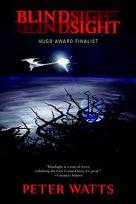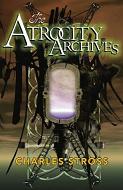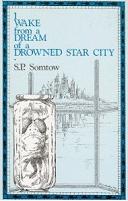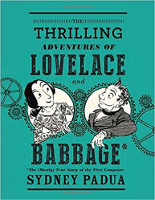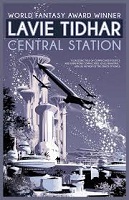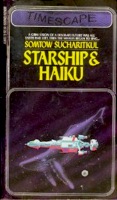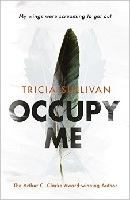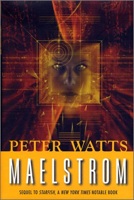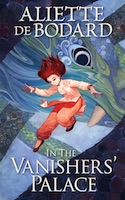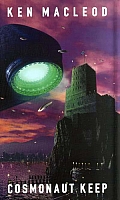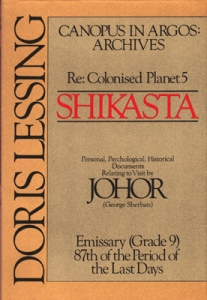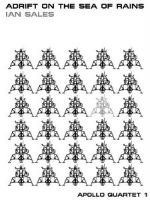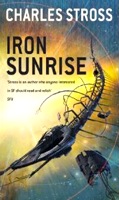 Iron Sunrise, the second book in Charles Stross' Timelike Diplomacy series (as it is now known) starts with a bang. A big one. When the planet of Moscow, a happy, democratic, quite enlightened (if slightly backwards) planet is ‘Iron Bombed’ (essentially – the core of its sun was replaced by an iron crystal of equivalent mass, leading to some rather cataclysmic-catastrophic reactions in its suddenly unsupported mantle), the resulting massive radiation and plasma pulse obliterates everything in its way in the star system. This leads to the automatic deployment of its 2nd strike deterrent force – sublight speed bombers equipped with planet busters, neigh impossible to stop, or defend against.
Iron Sunrise, the second book in Charles Stross' Timelike Diplomacy series (as it is now known) starts with a bang. A big one. When the planet of Moscow, a happy, democratic, quite enlightened (if slightly backwards) planet is ‘Iron Bombed’ (essentially – the core of its sun was replaced by an iron crystal of equivalent mass, leading to some rather cataclysmic-catastrophic reactions in its suddenly unsupported mantle), the resulting massive radiation and plasma pulse obliterates everything in its way in the star system. This leads to the automatic deployment of its 2nd strike deterrent force – sublight speed bombers equipped with planet busters, neigh impossible to stop, or defend against.
These are aimed at Moscow’s local trade competitor, New Dresden, which is 35 light years away from Moscow. And 30 years from the arrival of the bombers when we join the story. How do you evacuate a planet of 3 billion people, even over 30+ years? You do the maths – it transpires, very simply, that you don’t, not with any kind of fleet of ‘normal’ FTL space ships.
And, even better, it wasn’t even New Dresden behind the bombing in the first place… This situation brings on the ‘Black Chamber’ UN diplomats from Old Earth, especially Rachel Mansour and her (now) husband Martin Springfield, the protagonists from the first book playing in the ‘Timeline Diplomacy’ universe, Singularity Sky. Their mission? Figure out who bombed Moscow and who is now killing, one after the other, its remaining Ambassadors to other worlds. Stop them. And stop the bombers running on New Dresden. It's quite a brief…
But the person who knows what really happened, or who at least has access to the clues, is a displaced evacuee teenager called (ok, calls herself) Wednesday Shadowmist, who gets evacuated from Portal Station 11 (affectionately known to its inhabitants as 'Old Newfoundland Four'), 3.6 light years away from the explosion; a distance which provides enough time to evacuate, but is still way too close to the Iron Sunrise to protect human life within the station from the expanding shock wave …
The universe the book plays in known from Singularity Sky. The story is set directly after the first one in real time (whatever that means in a universe where you have FTL, including time travel), but has no real relation to it except for the coninuity for the two shared protagonists, so can very well be read on its own; all you will miss is some back story of some of the main protagonists, but nothing crucial that would detract from your enjoyment of this story.
So we get the same core concepts – causality within light cones (no, I’m not going to explain that one. Read the books.), and the Eschaton, who distributed the inhabitants of Earth across the Universe in one fell swoop, leaving behind a largely depopulated planet, with a huge Diamond memorial on every world, stating
I am the Eschaton. I am not your god.
I am descended from you and I exist in your future.
Thou shalt not violate causality within my historic light cone.
Or else.
We also get FTL (isn’t that a causality violation?), and Quantum-entangled instant communication (the Qbits have to be moved by sub-light freighter, which makes them prohibitively expensive). And of course the big question which could set up an entire raft of stories in itself – the Iron Bomb violates causality, badly. Why didn’t the Eschaton interfere to prohibit it being used, the way it usually does (asteroid strikes and similarly drastic interventions) before anybody got round to deploying it?
What this book does, in contrast to the first one, though, is to introduce a ‘real’ enemy, and a basis for a potential long-running series of books detailing the fight against it/them.
So we get the baddies of the story – not a planetary society (if you can call a planetary society and its hare-brained politicians a 'baddie') this time, but an expansionist philosophy/religion – fascist, Nazi, and very very German. There are several interludes in the story which tell the back-story of how the entire situation the protagonists find themselves in came to be, and which provides some insights into the culture and habits of the ‘ReMastered’ race and it’s exponents like U. Portia Hoechst, U. Mathilde Todt, and U. Franz Bergman, to name the main ones from the story (the U. stands for Uebermensch. Charming, innit?).
The style of the book alternates between long-ish descriptions and explanations, reminiscences of times past (usually with a connection to the situation at hand; and breathless/breathtaking action, normally for brief spells.
The story unwinds in several threads, which start pulling together as the book progresses. There are interconnections, sometimes quite subtle ones, between these threads and stories, and thus both the story as well as the time lines connecting the threads become clearer over time. This isn’t really playing with the reader’s understanding in a Frederic Brown way, but more a device that allows for a journey of discovery and growing understanding of people, facts, and links in the story.
Overall this approach is very well executed, and makes the book readable, enjoyable, and also (not always a given) re-readable.
And, or course, we get some Stross-isms and special turns of language, which is always a bonus. My favourite is ‘faeco-ventilatory intersection event’ (something I will have to drop into a business report somewhere soon), and the description by a flight officer of the luxury cruise liner Romanov, using only its cold thrusters near a station: “they had about as much effect as a team of ants trying to kick a dead whale down the beach.”
The main areas of criticism from my point of view would be some gaps in the logic of the universe, and a tendency for some descriptions and explanations to feel repetitive and self-indulgent (I’ve done the research, and by golly I shall use it!). Not something that should keep anyone from enjoying this excellent piece of Space Opera, though.
Overall Fun. Not exceedingly deep, or taking itself too serious; in a good way. Captivating. Recommended.
Title: Iron Sunrise
Series: Timelike Diplomacy
Series Number: 2
Author: Charles Stross
Reviewer: Markus
Reviewer URL: http://skating.thierstein.net
Publisher: Orbit
Publisher URL: http://www.orbitbooks.co.uk
Publication Date: August 2005
Review Date: 080901
ISBN: 1841493368
Price: UKP 6.99
Author URL: antipope.org
Pages: 480
Format: Paperback
Topic: SF
Topic: Space Opera
More Charles Stross
